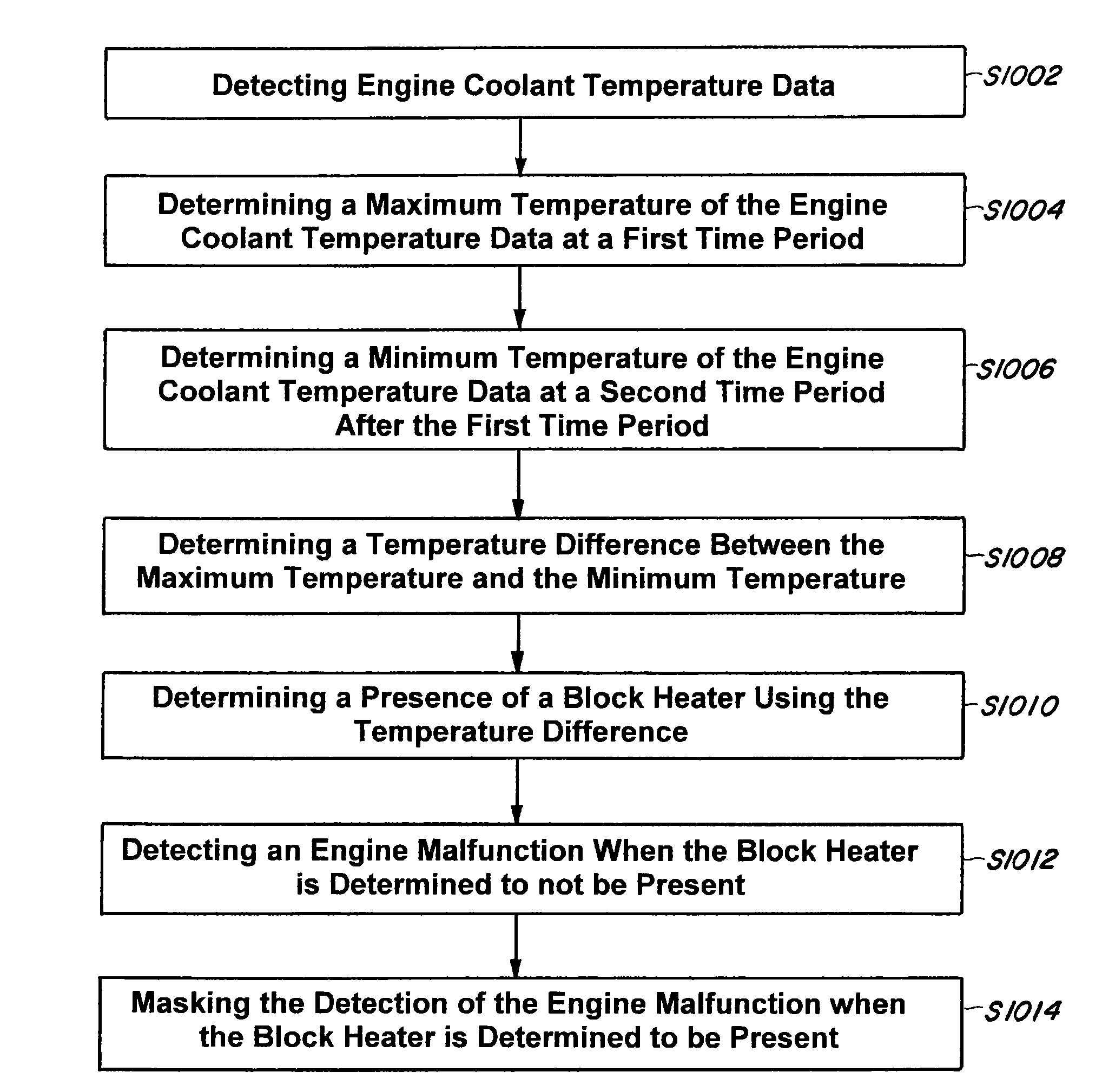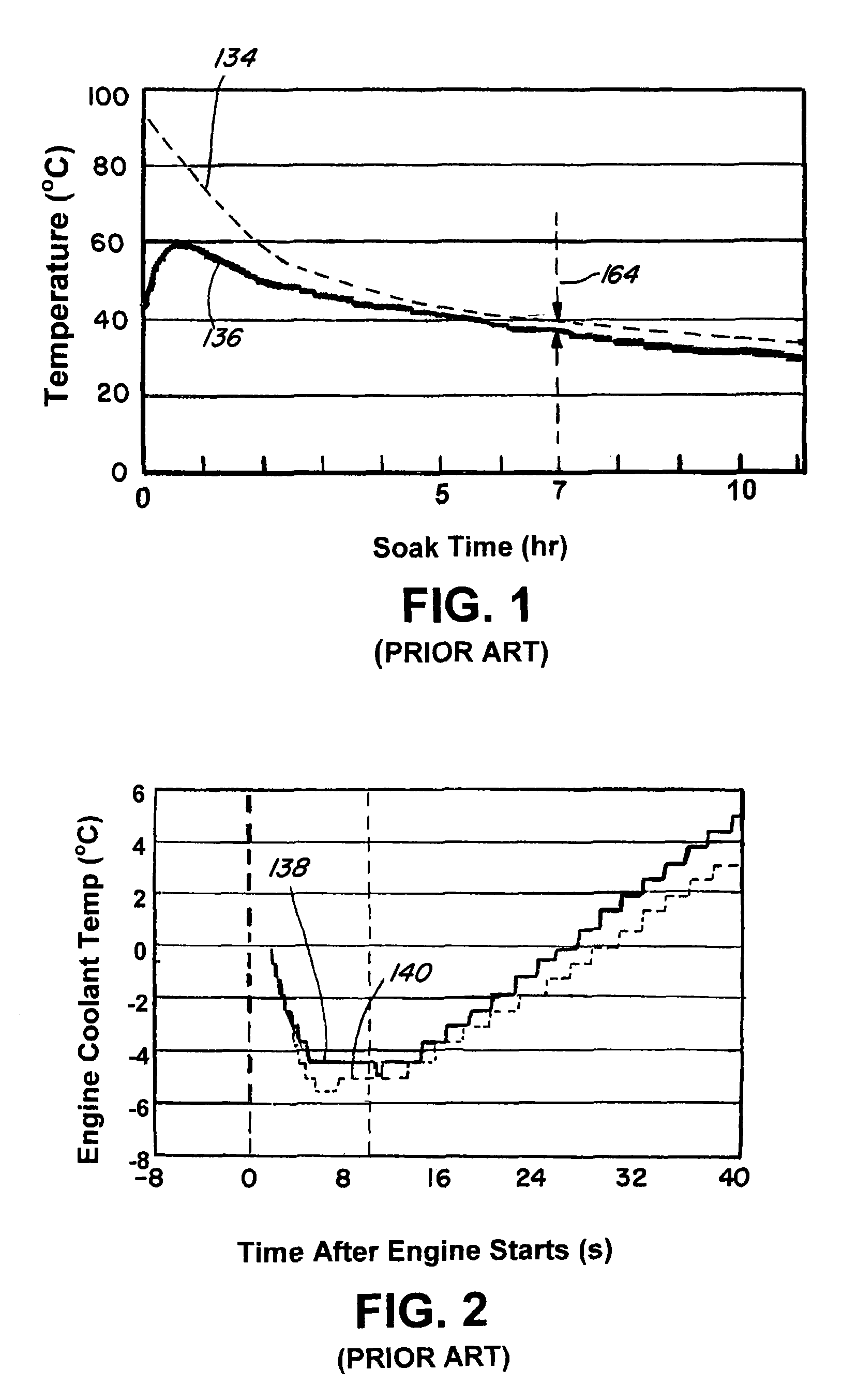Method and system for detecting a presence of a block heater in an automobile
a technology for automobiles and heaters, applied in the direction of engine starters, electric control, instruments, etc., can solve the problems of false detection of a malfunction by the engine control unit, insufficient conventional methods, and insufficient detection accuracy, etc., to achieve accurate detection
- Summary
- Abstract
- Description
- Claims
- Application Information
AI Technical Summary
Benefits of technology
Problems solved by technology
Method used
Image
Examples
Embodiment Construction
[0027]Apparatus, systems and methods that implement the embodiments of the various features of the present invention will now be described with reference to the drawings. The drawings and the associated descriptions are provided to illustrate some embodiments of the present invention and not to limit the scope of the present invention. Throughout the drawings, reference numbers are re-used to indicate correspondence between referenced elements.
[0028]In one embodiment, the present invention includes an automobile 100 as shown in FIG. 4. The automobile 100 includes, for example, an engine bay 102. Located inside the engine bay 102 are an engine 104, a radiator 106, an engine coolant temperature (“ECT”) sensor 114, an intake air temperature (“IAT”) sensor 116, and / or an engine control unit (“ECU”) 118. In addition, a block heater 122 can also be used and / or located in the engine bay 102.
[0029]The radiator 106 includes, for example, radiator hoses 110 and / or a fan 112. The radiator hose...
PUM
 Login to View More
Login to View More Abstract
Description
Claims
Application Information
 Login to View More
Login to View More - R&D
- Intellectual Property
- Life Sciences
- Materials
- Tech Scout
- Unparalleled Data Quality
- Higher Quality Content
- 60% Fewer Hallucinations
Browse by: Latest US Patents, China's latest patents, Technical Efficacy Thesaurus, Application Domain, Technology Topic, Popular Technical Reports.
© 2025 PatSnap. All rights reserved.Legal|Privacy policy|Modern Slavery Act Transparency Statement|Sitemap|About US| Contact US: help@patsnap.com



